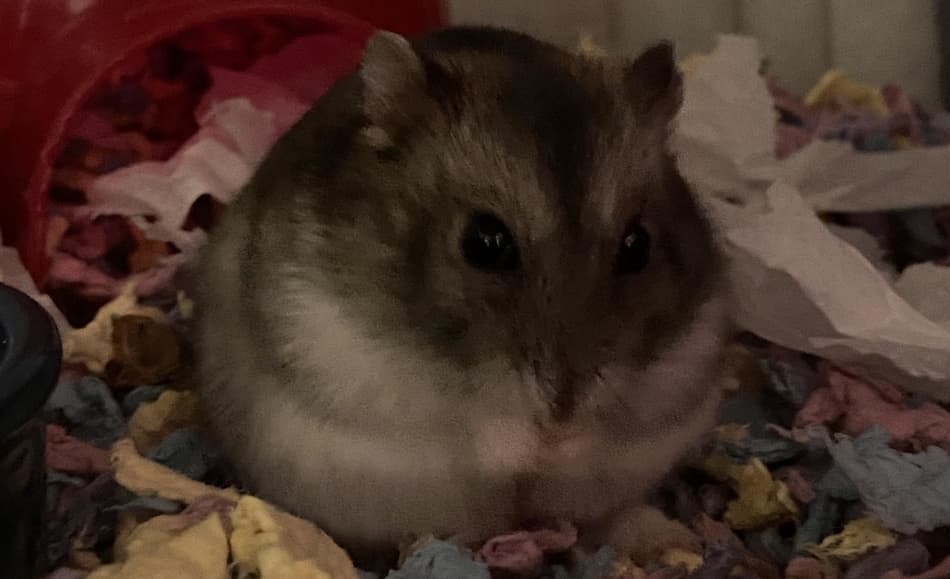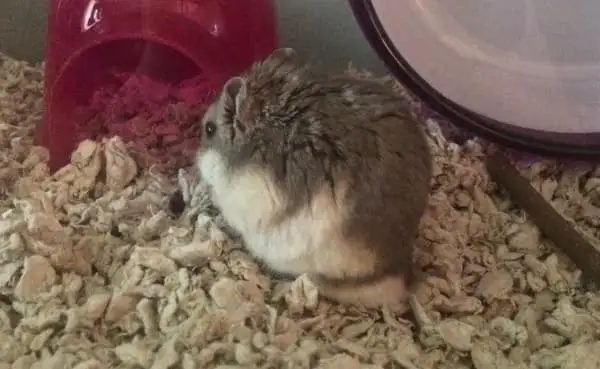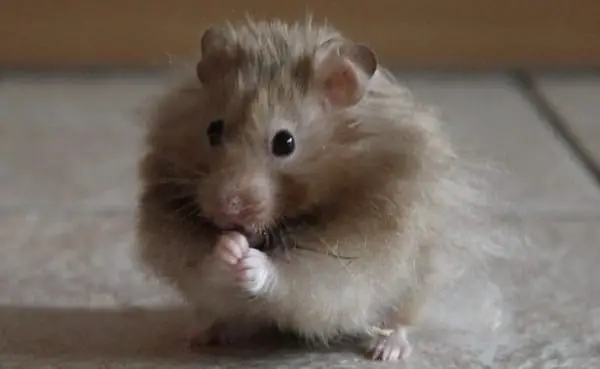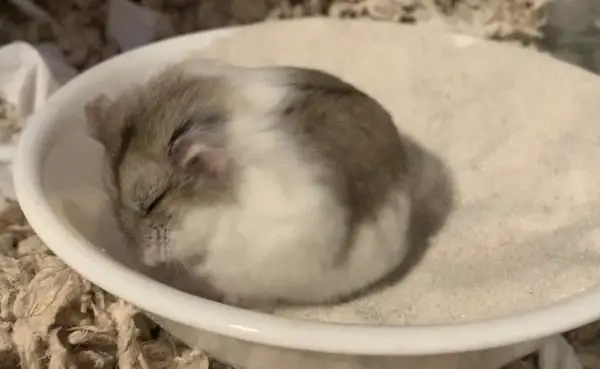Grooming is a natural behavior for hamsters. You will often see them licking, scratching, and combing their paws through their fur. Each hamster is different, but there are many physical and psychological triggers as well as some common points in hamster grooming that will help you gauge your hamster’s health and happiness.
So, why do hamsters groom themselves so much? Grooming keeps your hamster clean and healthy. It is also associated with their instinct to have as little scent as possible so as not to attract predators. Occasionally, unusual amounts of grooming can signify an allergy, skin irritation, or stress.
In this article, we’ll explain why your hamster grooms itself after eating, after being handled, after playing, after sleeping—and apparently every time in between. We’ll also take a look at the few issues that could cause overgrooming and discuss ways you can help your hamster stay clean and healthy.
Why Do Hamsters Clean Themselves So Much
Hamsters are diligent groomers, and their frequent self-cleaning behavior serves multiple vital purposes in maintaining their health and well-being. Their dense fur, prone to trapping debris and food particles, necessitates regular grooming to ensure cleanliness, vital for insulation and overall hygiene. Through grooming, hamsters also engage in scent marking, spreading their scent across their fur to communicate with other hamsters and establish territorial boundaries.
Additionally, grooming serves as a cooling mechanism, as the saliva evaporates and helps regulate their temperature, a crucial function for hamsters who cannot sweat. This activity also acts as a natural stress reliever, aiding hamsters in relaxing and adapting to changes in their environment. Furthermore, grooming allows hamsters to conduct self-examinations, checking for abnormalities, injuries, or parasites. In group settings, hamsters engage in allogrooming, fostering social bonds and a sense of security.
Fundamentals of Hamster Grooming
The first reason most hamsters spend so much of their time grooming is that they instinctively want to stay clean and tidy. There are many good reasons for them to practice this good hygiene. The first is that keeping their fur clean keeps them comfortable. Dirty, matted, or disarranged fur can be itchy and irritating.
Scent Safety
You may notice that your hamster often grooms itself after you have been holding it. Have you ever wondered if it’s because the hamster feels like you’ve made it dirty or messed up its fur? In a way, this is true. Hamsters don’t like to carry the scent of anything but themselves and will lick and groom themselves until they’ve washed it away.
This is also why hamsters groom themselves after eating, after pooping or peeing, and after playing in their ball, wheel, or some other area of the house—basically between everything else they do.
They are making sure they don’t carry the scent of the things they’ve touched along with them. This appears to be based on their instinct to protect themselves. A small animal with almost no scent is much harder for predators to find.
Hygienic Health
Grooming is also a hamster’s way of keeping its fur and skin healthy. Allowing itself to get too dirty, dusty, or oily could cause skin infections and itchiness or invite an infestation of parasites. Dirty fur also hinders a hamster’s ability to regulate its temperature and could allow sore spots to form. Regular grooming keeps its fur smooth, clean, and dry.
When to Be Concerned About Hamster Grooming
A hamster that regularly grooms itself is a happy, healthy hamster behaving naturally. You should be more concerned about a hamster that neglects to groom itself, as this can signify illness or old age. Over-grooming or constant face washing may also be a sign of stress.
Your Hamster is Not Grooming
A hamster that is neglecting to groom itself will quickly began to show signs of disarray. Its fur may become dull and oily. It may clump or stick up rather than lying flat, and fecal matter may become matted around the tail area.
This is definitely a reason for concern. Most hamsters only begin to neglect their grooming if they are very ill or very old. Following are some of the most common afflictions suffered by hamsters along with other observable symptoms.
Wet Tail—This is a serious bacterial infection that is also highly contagious. It is often triggered by stress, overcrowded conditions, a dirty cage, or very cold or hot temperatures. Along with failure to groom and unkempt fur, symptoms include a wet area around the tail and lethargy.
Diarrhea—Diarrhea may be caused by an upset stomach, a reaction to contaminated food, or too many juicy foods like fruits and vegetables. It may become matted around your hamster’s tail area despite its attempts to groom it away.
Constipation—A hamster will most often develop constipation if it is getting too many hard, dry foods and not enough water. As the issue continues, it may refuse to eat dry food, lose weight, and have a wet or dirty area around its tail.
Common Cold—That’s right, your hamster can get a cold just like you can. Symptoms include dull, mussed fur—especially around the eyes, ears, and nose—sneezing or sniffling, and lethargy.
Paralysis—A hamster that is kept in too small of a cage, doesn’t get enough exercise, eats a diet lacking in vitamin D, or has had its spine injured at some point, may slowly develop paralysis. Along with lack of grooming, your hamster may sit or move in a hunched over posture and be unable to raise its head.
Your Hamster is Constantly Scratching and Licking
Every once in a while, a hamster will suffer from obsessive compulsive grooming. This is often a reaction to stress, and it looks very different from regular, healthy grooming. The hamster will most often focus nervous grooming on its face, washing it over and over.
Constant scratching or licking of the fur may also indicate a parasite or skin disease. Hamsters kept in unsanitary conditions or that have had contact with other infected animals may become afflicted with mange, lice, or fleas.
An overgrooming hamster may also be suffering from a skin infection or abscess. Look for the following signs and contact your vet if you think your hamster may be suffering from any of these issues.
- Scabs, especially around the nose, ears, and genitals
- Thinning fur or bald patches
- Tiny insects
- Red, irritated skin
- Open sores
- Dandruff
Hamsters can also develop these health issues due to unsuitable bedding or lack of certain nutrients in their diet.
How to Help Your Hamster With Grooming
You can help your hamster avoid many of the ailments associated with lack of grooming or over-grooming by helping it keep things as clean and tidy as it naturally desires. Start by providing a roomy habitat and keeping the habitat clean.
If your hamster has picked up a parasite or developed one of the infectious illnesses covered above, you may need to clean its cage even more frequently and disinfect the area with a pet safe disinfectant.
What Not to Do
Never try to give your hamster a bath unless you have been specifically instructed by an exotic vet. These tiny animals can quickly become chilled and even die from being wet for any amount of time.
You should also avoid trying to treat an ill hamster with any home remedies or treatments intended for other pets. Again, as tiny, sensitive animals, they can have an adverse reaction to something that would be quite safe for cats or dogs.
Avoid using cleaning solutions or other household products that may irritate your hamster’s coat and skin. Even hand lotions or perfumes could cause your hamster to have an allergic reaction or overgroom in an effort to remove buildup or scent from its fur.
What to Do
Especially if you have a long-haired hamster, it may appreciate a little help with grooming. You can gently brush your hamster with a small pet brush or soft, unused toothbrush.
You may also be able to remove bedding that gets stuck or tangled in your hamster’s fur. If fecal matter has hardened it to the fur, try gently washing the area with a soft, damp cloth, being careful not to get your hamster too wet.
Many hamsters also enjoy having the option of a sand bath. This is just a dish filled with a fine sand or dust specifically formulated for small animals. Your hamster will roll around in the dish and rub the dust into its fur. The dust absorbs excess oil, keeping your hamster’s fur smooth, clean, and dry.
Washing your hands before and after you handle your pet can also help it keep its fur clean and avoid the diseases mentioned earlier. It will also keep you from spreading bacteria from one pet to another or between others in your household and your pets.
Finally, you can also help your hamster maintain a healthy coat and avoid diseases that would stop it from grooming by providing a healthy, well-balanced diet. A hamster with health or grooming issues may also benefit from the opportunity to absorb a little sunlight.
You can provide this by temporarily moving your hamsters cage to where it can get some direct sunlight through a window. Just make sure it can still retreat to the shade and that the habitat does not overheat.
Conclusion
You absolutely want to see your hamster grooming regularly and naturally, as this means that it is mentally and physically healthy and intends to stay that way. However, hamster excessive grooming or a lack of grooming may be an indication that your hamster is not well or is suffering from an allergy or parasite.
Additionally, you can assist your hamster in staying clean and healthy by keeping its habitat that way, providing adequate diet and dust bathing opportunities, avoiding the use of products that aggravate its condition, and only handling it with clean hands.




